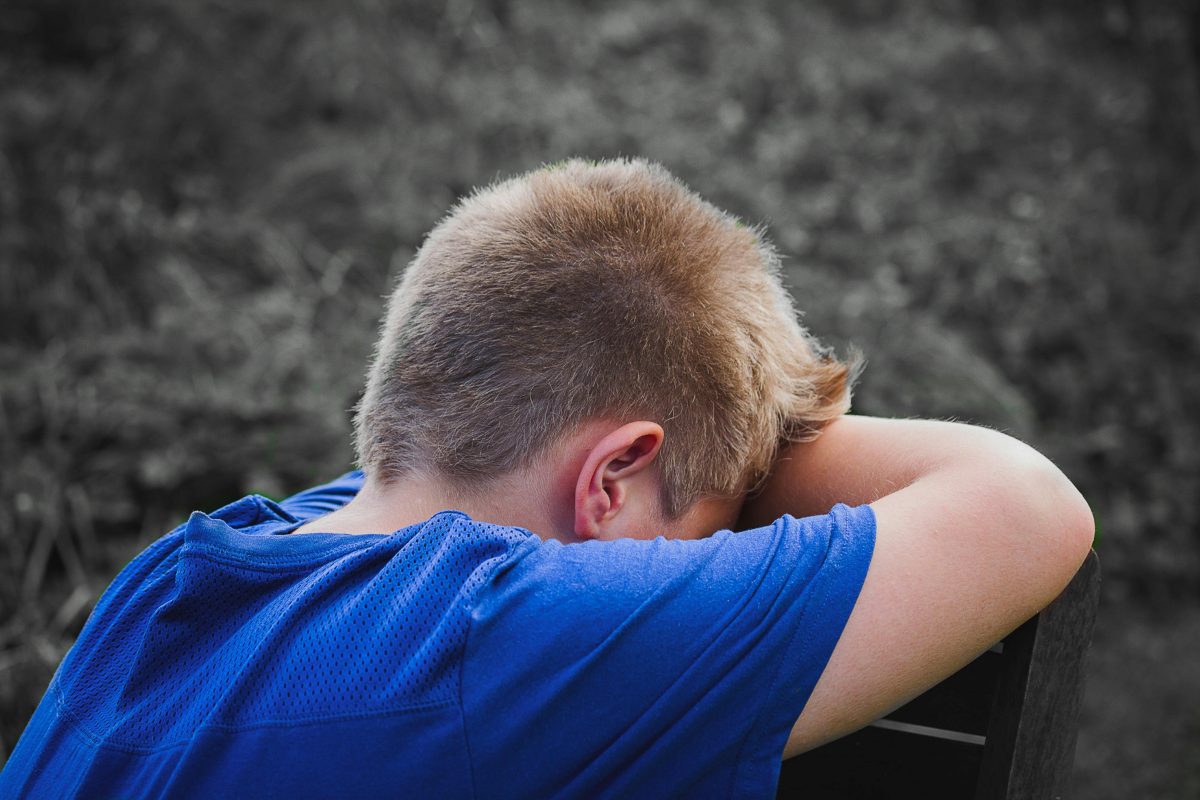Introduction to Childhood Depression

Once considered an uncommon ailment, childhood depression is today acknowledged as a serious problem impacting young people all over the world. Its prevalence emphasizes how important early detection and treatment are. Not only is it vital to comprehend and treat childhood depression, but it is also essential to ensuring that our children have better, happier lives. This article seeks to clarify the nature and frequency of childhood depression, emphasize the significance of identifying and treating it, and set the stage for an in-depth conversation on “Understanding Childhood Depression: Signs and Support.” We set out on a journey to explore the complexity of childhood depression through a blend of expert insights and useful guidance, with the goal of equipping parents, educators, and caregivers with the knowledge and resources necessary to support the young people in their life.
Identifying the Indicators of Depression in Kids

Symptoms of Emotion
- Frequent bouts of sobbing, despondency, and persistent sadness
- Guilt or a sense of unworthiness over insignificant events
Modifications in Behavior
- Removing yourself from social circles and past interests
- Modifications to sleeping or eating routines
Physical Symptoms
- Regular headaches or stomachaches that don’t seem to have a medical reason
Performance Problems in the Classroom
- A discernible decline in academic performance or an abrupt lack of enthusiasm for learning
Identifying and comprehending these indications of depression in kids is the first stage in offering the required assistance. We can help our children navigate their challenges with empathy and understanding by remaining aware and watchful, ensuring they don’t have to fight their fights alone.
Comprehending the Origins and Potential Hazards

The relationship between genetic predispositions and family historyDepression affects people of all backgrounds and does not discriminate. However, a family history of depression has been shown to increase the risk in kids. This hereditary propensity serves as a quiet indicator, suggesting that families may experience comparable difficulties. Acknowledging this might be an important first step toward early help and intervention.
Environment-Related Factors
Our environment shapes who we are, and youngsters are especially affected by this. Traumatic events, including family strife or bullying, can have a significant impact on a child’s mental health. These outside pressures, which are frequently disregarded, are important in the development of depression. In order to support and understand our children as they traverse these issues, we must establish an environment of understanding and support.
The Connection Between Physical Health Problems and Brain Chemistry
A key factor in the complexity of depression is brain chemistry. Depression may be exacerbated by imbalances in neurotransmitters, which are the chemical messengers in the brain. Physical health conditions like chronic illness can also cause or worsen depression episodes. A comprehensive approach to treating childhood depression requires an understanding of this interaction.
Social Media and Online Interactions’ Effects
Social media and online interactions have a significant effect on children’s mental health in the modern digital age. Feelings of loneliness and inadequacy might result from cyberbullying risks and the pressure to live up to unattainable ideals. It is essential that we keep an eye on and direct our kids’ online behavior in order to instill positive digital habits.
Gaining insight into these causes and risk factors will help combat childhood depression. We can better help our children and point them in the direction of a better, healthier future by understanding the intricacy of this situation. To learn more about helping kids with their mental health, go to There are easily available resources and help at Beyond Blue and Headspace.
Techniques for Helping a Depressed Child

Getting to the Point and Speaking Efficiently
It takes tact and consideration to strike up a conversation about depression. It’s important to treat your child with kindness and compassion so they feel secure and supported. Asking open-ended inquiries might help them open up about their emotions, and listening intently shows them that you care and are in love with them. Establishing trust and understanding begins with this first step.
Looking for Professional Assistance: Comprehending the Functions of Psychologists, Psychiatrists, and Therapists
It can be intimidating to navigate the world of mental health specialists. In addition to providing a wide range of counseling services, therapists specialize in behavioral methods and coping mechanisms. Psychologists investigate mental health problems in greater detail and offer therapy and diagnoses. Medical professionals who specialize in mental health and who can prescribe medicines provide a clinical approach to treatment. Each contributes in a different way to your child’s journey toward mental health.
Possible Course of Treatment: Counseling, Drugs, and Lifestyle Adjustments
Therapy, medicine, and healthy lifestyle modifications are frequently combined in effective treatment plans. Children benefit greatly from cognitive-behavioural treatment (CBT), which helps them reframe unfavourable thoughts. Medication could be suggested in some circumstances to control symptoms. Promoting a balanced diet and regular exercise as part of a healthy lifestyle can also help to improve mental health.
A Supportive Home Environment Is Crucial
An encouraging home atmosphere is essential to a child’s depression recovery. Consistent daily schedules, affirmative feedback, and transparent dialogue cultivate a feeling of safety and inclusion. Engaging in family activities and spending quality time together helps to fortify emotional attachments and provide a secure environment for your child to escape from life’s hardships.
It takes time, sensitivity, and thoughtful action to fully comprehend and help a depressed youngster. By using these techniques, you may provide your child the vital assistance they require to find their way back to wellness.
Management Techniques for a Depressed Child

Getting to Know the Subject and Speaking Well
- It takes tact and consideration to open up the discussion regarding depression. It’s important to treat your child with kindness and compassion so they feel secure and supported.
- Asking open-ended questions can inspire them to communicate their emotions, and your careful listening shows them how much you care and how much you love them. Establishing trust and understanding begins with this first step.
Getting Professional Assistance: Recognizing the Functions of Psychologists, Psychiatrists, and Therapists
- While concentrating on behavioral techniques and coping mechanisms, therapists provide a wide range of counseling services.
- Psychologists examine mental health concerns in greater detail, offering therapy and diagnoses.
- Psychiatrists are medical professionals who provide a clinical approach to treatment and are authorized to prescribe medication. Each contributes in a different way to your child’s journey toward mental health.
Possible Course of Treatment: Counseling, Drugs, and Lifestyle Adjustments
- Children benefit greatly from cognitive-behavioural therapy (CBT), which helps them reframe unfavorable thoughts.
- To manage symptoms, medication may be advised in certain situations.
- Promoting a healthy lifestyle that includes a balanced diet and frequent exercise can also help mental health.
The Value of a Helping Environment at Home
- An encouraging home atmosphere is essential to a child’s depression recovery. A sense of security and belonging can be fostered through consistent routines, positive reinforcement, and open communication.
- Engaging in family activities and spending quality time together helps to fortify emotional attachments and provide a secure environment for your child to escape from life’s hardships.
It takes time, sensitivity, and thoughtful action to fully comprehend and help a depressed youngster. By using these techniques, you may provide your child the vital assistance they require to find their way back to wellness.
Growing Up in Education and Overcoming Social Obstacles

Working with Educational Institutions: Housing and Support Services
- Developing a partnership with educational establishments is essential to helping depressed kids. Exam schedule adjustments or workload adjustments are just a couple of the accommodations that schools can provide based on your child’s needs.
- Making use of special education programs and counseling services, among other forms of support, can also have a big impact. A collaborative approach is ensured by open communication with teachers and staff, creating an environment that supports your child’s academic and emotional growth.
Bullying and Social Stigma: Preventive and Corrective Measures
- Bullying must be addressed because it can make childhood depression worse. Anti-bullying policies and initiatives that uphold inclusivity and respect should be implemented in schools.
- Children can learn the value of kindness and empathy from their parents and other caregivers, who can also support these initiatives. If bullying takes place, quick action is required. Combating bullying and its effects requires close collaboration with the school to resolve issues and giving your child a safe space to express their emotions.
Promoting Positive Peer Connections and Extracurricular Activities
- The social and self-esteem development of a child is greatly aided by positive peer relationships. Encourage your child to participate in extracurricular activities—sports, the arts, or volunteer work—that suit their interests.
- Along with creating friendships, these activities also boost self-esteem and a feeling of achievement. Encouraging your child to participate in extracurricular activities and engage in healthy social interactions can greatly improve their resilience and mental health.
Managing the school system and addressing social issues are essential elements of helping a depressed child. By supporting accommodations, combating bullying, and promoting constructive social interaction, we can build a framework of support that enables our kids to overcome challenges and thrive.
To sum up
Depression in childhood requires our careful attention. It’s a difficult yet fruitful journey from darkness to light, full of chances for development. By being aware of its symptoms, causes, and successful treatments, we enable our kids to deal with adversity head-on. In order to promote recovery and resilience, this article emphasizes the value of a caring home environment, professional guidance, and a supportive community. Let’s make a commitment to lead our children toward a better, healthier future by serving as their guiding light and source of support.
Understanding Childhood Depression: Signs and Support FAQs
Yes, childhood depression can be effectively treated through a combination of therapy, medication (in some cases), and support from family and caregivers. Cognitive-behavioral therapy (CBT) is particularly effective in helping children develop coping strategies and change negative thought patterns. Early intervention and tailored treatment plans are crucial for successful outcomes.
Supporting a child with depression involves providing a stable, understanding, and supportive environment at home. Encouraging open communication without judgment allows your child to express their feelings freely. Additionally, actively participating in their treatment plan and making adjustments to daily routines to reduce stress can be beneficial.
If your child’s sadness is persistent, pervasive across different settings (home, school), and impacts their ability to function normally, it may indicate depression. Unlike typical sadness, depression involves more intense feelings of hopelessness and worthlessness that don’t dissipate easily. Observing your child over time and noting changes in their behavior, appetite, and sleep patterns can provide clues.
Schools can support children with depression by providing a supportive and understanding environment, making accommodations as needed, and facilitating access to school-based mental health services. Training staff to recognize the signs of depression and creating a culture that promotes mental health awareness can make a significant difference. Collaboration between schools, families, and mental health professionals is essential for providing comprehensive support.
Therapy provides a safe space for children to express their feelings and thoughts, helping them understand and manage their emotions. Techniques used in therapy, such as cognitive-behavioral strategies, can teach children how to challenge negative thoughts and develop healthier coping mechanisms. This process is crucial for building resilience and promoting recovery.
Common signs of depression in children include persistent sadness, withdrawal from social interactions, and a noticeable decrease in interest in activities they once enjoyed. These symptoms can significantly impact their daily functioning and enjoyment of life. It’s important to note that children may not always articulate their feelings directly, making observation of changes in behavior crucial.
Depression in children can be caused by a combination of genetic, environmental, and psychological factors. Situations such as bullying, family stress, or trauma can trigger depression, especially in children who may be genetically predisposed. It’s a complex interplay of factors, and understanding the specific cause in each case can be challenging.
While the core symptoms of depression, such as sadness, loss of interest, and fatigue, are similar in children and adults, the way these symptoms manifest can differ. Children are more likely to exhibit irritability and behavioral problems as opposed to the more classic symptoms of sadness and hopelessness often seen in adults. Understanding these differences is key to recognizing depression in children.
Medication, typically selective serotonin reuptake inhibitors (SSRIs), can be an important part of treatment for some children with depression, especially in moderate to severe cases. These medications can help correct imbalances in brain chemistry that contribute to depression symptoms. However, medication is often most effective when combined with therapy and should be closely monitored for efficacy and side effects.
If you suspect your child is depressed, the first step is to talk to them in a supportive and non-judgmental way to understand their feelings. Following this, consulting a pediatrician or a child psychologist for a professional evaluation is crucial. These professionals can assess your child’s mental health and recommend appropriate treatment options, including referrals to specialists if needed.

